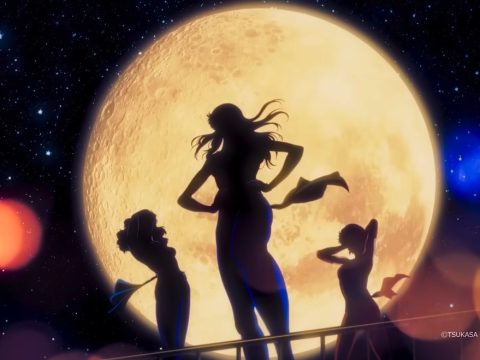
When we last talked about the first couple of Fairy Tail volumes, a decent amount of time was spent comparing Hiro Mashima’s work within to Eichiro Oda’s on One Piece. While that’s still a valid comparison, the third and fourth volumes of the series continue to bring Fairy Tail into its own, and though much of its design is visually reminiscent of Oda’s, readers will have mentally moved on at this point. The story is definitely worth focusing on, and the action is as well done as any of the more popular shonen titles out there.
 Volume three opens in the midst of a battle sparked in the last chapter. The ragtag team from Fairy Tail pulls out all the stops while taking on the dark guild Eisenwald inside a train station, trying their best to stop them from doing the unthinkable: broadcasting a lullaby that spells nothing but death to anyone within earshot. They’ve chosen the perfect venue, too, as the station is home to a public broadcasting system that’s just a hop and a skip away from the epicenter of their brawl.
Volume three opens in the midst of a battle sparked in the last chapter. The ragtag team from Fairy Tail pulls out all the stops while taking on the dark guild Eisenwald inside a train station, trying their best to stop them from doing the unthinkable: broadcasting a lullaby that spells nothing but death to anyone within earshot. They’ve chosen the perfect venue, too, as the station is home to a public broadcasting system that’s just a hop and a skip away from the epicenter of their brawl.
As sinister as this musical massacre may sound, it’s all a ruse to disguise an even more vicious scheme. Eligor plans to use the window of opportunity provided here to escape and use the flute against the old guild masters themselves, all of which are engaged in a meeting nearby. Natsu has to break free of a spell keeping them in the train station, clinging to the hope that he can stop Eligor before his plan is executed.
If one were to read volume three with little to no previous introduction to Fairy Tail, they’d probably assume they were just dropped head-first in the middle of a long-running action series, because that’s about all that’s there. While “lots and lots of action” isn’t really something to complain about, it would be nice to get some more downtime with the characters and their world before plunging into the icy and unforgiving waters of non-stop battle manga.
The following volume dispels any of the aforementioned fears, however slight they may be, as the first few chapters shed some more light on the Fairy Tail guild and how it operates. Natsu, Happy and Lucy, for instance, aren’t anywhere near the top of the pecking order. While the battle with Eisengard may have been an impressive display of strength for their team, there are much more powerful guild members within these walls. In fact, those at Natsu’s level  aren’t even allowed to set foot on the second floor of their headquarters, because that’s where the dangerous S-class missions are offered up. Naturally, that means Natsu has to get one somehow, putting himself and his friends at risk as they travel to a cursed island in an attempt to show that they can handle anything the rest of the guild can.
aren’t even allowed to set foot on the second floor of their headquarters, because that’s where the dangerous S-class missions are offered up. Naturally, that means Natsu has to get one somehow, putting himself and his friends at risk as they travel to a cursed island in an attempt to show that they can handle anything the rest of the guild can.
Both of these volumes are certainly entertaining, but it’s the fourth that acts as an ideal showcase of the direction in which the series should be headed. The mysteries surrounding the island and the strange curse placed on its inhabitants move things along swiftly, and the secrets lying below the surface hold some heavy ties to the past for one of Fairy Tail’s guild members.
Though it was mentioned in the first paragraph, the quality of the art really does bear repeating, regardless of similarities to anything else. Mashima seems even more confident in these volumes, and there are good things ahead if Fairy Tail continues to grow at this rate. I’ll gladly accept some chapters of overblown action, just so long as he keeps digging deeper into establishing the universe and creating interesting assignments for everyone involved in at least every other volume.
Publisher: Del Rey
Story and Art: Hiro Mashima
Rating: T 13+







